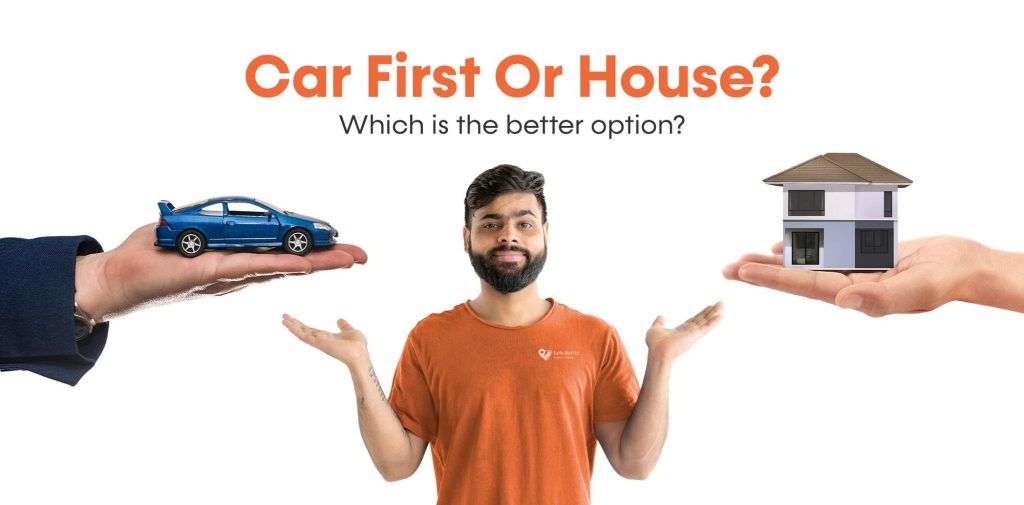India’s housing sector is undergoing a transformative phase, with affordable housing schemes playing a pivotal role in addressing the needs of the economically weaker sections (EWS), low-income groups (LIG), and middle-income groups (MIG). As urbanization accelerates and the population grows, the demand for affordable housing has surged. The Indian government, through central and state initiatives, continues to roll out schemes to make homeownership accessible to all by 2025. This article explores the latest updates on affordable housing schemes in India for 2025, their eligibility criteria, benefits, and how they are shaping the dream of “Housing for All.”
Introduction to Affordable Housing in India
Affordable housing schemes in India aim to provide homes for economically weaker sections, low-income groups, and middle-income families. As of 2025, these schemes have seen updates to better serve urban and rural populations, with both national and state-level initiatives playing a role. Understanding the latest updates and eligibility criteria can help you find the right scheme for your needs.
Major National Scheme: Pradhan Mantri Awas Yojana (PMAY)
PMAY is the flagship program, split into PMAY-Urban (PMAY-U) and PMAY-Gramin (PMAY-G). PMAY-U 2.0, launched in September 2024, targets one crore urban families over five years, while PMAY-G continues to focus on rural housing with a goal to build two crore houses by 2029.
- Updates for 2025: PMAY-U 2.0 emphasizes financial aid through four verticals, including interest subsidies, with a focus on vulnerable groups. PMAY-G has allocated targets for 2024-25, aiming for completion by March 2029.
- Eligibility Criteria: For PMAY-U 2.0, eligibility includes:
- Economically Weaker Section (EWS): Up to ₹3 lakh annual income.
- Low Income Group (LIG): ₹3 lakh to ₹6 lakh.
- Middle Income Group (MIG): ₹6 lakh to ₹9 lakh.
- No pucca house ownership in India, with preferences for widows, single women, and others.
- PMAY-G targets rural households identified through SECC 2011, with assistance up to ₹1.20 lakh in plain areas.
- How to Apply: Visit the official PMAY website or PMAY-Gramin for online applications, ensuring all documents are ready.
State-Specific Schemes
State schemes complement national efforts, offering tailored solutions. Here, we highlight two prominent ones:
Indiramma Housing Scheme (Telangana)
- Overview: Launched in 2024, it provides ₹5 lakh per family for housing, with a ₹22,000 crore budget, targeting the homeless.
- 2025 Updates: Beneficiary lists for 2025 have been released, with surveys conducted to ensure eligibility.
- Eligibility: Residents of Telangana, low-income groups (especially Dalits, tribal, minorities), no home ownership, and special provisions for Telangana movement participants.
- Application: Apply online via the official website Indiramma Housing.
DDA Housing Scheme (Delhi)
-
- Overview: DDA offers flats for various income groups, with 2025 schemes like Sharmik Awas Yojana providing discounts.
- 2025 Updates: Includes 5,531 flats in areas like Narela, with prices starting at ₹128 lakh for MIG/HIG, and discounts for EWS.
- Eligibility: Indian citizens, no residential property in Delhi for general schemes; for Sharmik Awas, must be EWS, Delhi resident, and specific categories like construction workers.
- Application: Register online at the DDA website.
Other Notable Schemes
Other states have their own initiatives, such as MHADA and CIDCO in Maharashtra, UP Housing Scheme, and Haryana Urban Housing Scheme, each with unique eligibility and application processes. Check state portals for details.
Choosing the Right Scheme
Consider your location, income group, and scheme benefits. Apply early, verify eligibility, and keep documents ready to increase success chances.
Survey Note: Detailed Analysis of Affordable Housing Schemes in India, 2025
This survey note provides an in-depth exploration of affordable housing schemes in India as of May 14, 2025, focusing on updates and eligibility criteria. It aims to offer a comprehensive guide for potential beneficiaries, drawing from official sources and recent updates to ensure accuracy and relevance.
Background and Importance
Affordable housing remains a critical need in India, given the growing urban population and rural housing shortages. Government schemes, both national and state-level, are designed to address these needs, targeting economically weaker sections (EWS), low-income groups (LIG), and middle-income groups (MIG). The focus for 2025 is on enhancing accessibility, with updates reflecting new budgets, beneficiary lists, and technological integrations for application processes.
National Scheme: Pradhan Mantri Awas Yojana (PMAY)
PMAY, launched in 2015, is divided into PMAY-Urban (PMAY-U) and PMAY-Gramin (PMAY-G), each with distinct goals. Recent updates for 2025 highlight the continuation and expansion of these schemes.
- PMAY-Urban 2.0 (PMAY-U 2.0):
- Launched on September 1, 2024, PMAY-U 2.0 aims to assist one crore urban families over five years, focusing on financial aid through four verticals: Beneficiary-Led Construction (BLC), Affordable Housing in Partnership (AHP), In-Situ Slum Redevelopment (ISSR), and Interest Subsidy Scheme (ISS).
- 2025 Updates: A national workshop on November 14, 2024, organized by the Ministry of Housing and Urban Affairs (MoHUA) and National Housing Bank (NHB), emphasized implementation strategies, attended by over 250 stakeholders. Vulnerable groups are still given priority under the plan, and states and UTs can modify the EWS income requirements with MoHUA approval.
- Eligibility Criteria: The administrative rules specify eligibility in detail, including:
- EWS: Annual income up to ₹3 lakh.
- LIG: ₹3 lakh to ₹6 lakh.
- MIG: ₹6 lakh to ₹9 lakh.
- No pucca house ownership by the beneficiary or family anywhere in India.
- Exclusion for those who received housing assistance in the last 20 years.
- Preferences for widows, single women, persons with disabilities, senior citizens, transgenders, SC/ST, minorities, Safai Karmi, street vendors, artisans, Anganwadi workers, and others.
- Residency verification may involve a cut-off date set by states/UTs, with Aadhaar mandatory for application.
- Application Process: Beneficiaries apply via the official portal , filling out forms, uploading documents, and submitting for district/ULB-level committee verification. The CLSS Awas Portal (CLAP) integrates stakeholders for real-time monitoring.
- PMAY-Gramin (PMAY-G):
- Aimed at rural housing, PMAY-G targets 4.95 crore households by March 2029, with a recent cabinet approval on August 9, 2024, for constructing an additional two crore houses from FY 2024-25 to 2028-29.
- 2025 Updates: As of February 2, 2025, 3.79 crore houses allotted, 3.34 crore sanctioned, and 2.69 crore completed. Targets for 2024-25 include 84,37,139 houses across 18 states, with a total outlay of ₹3,06,137 crore (Central share ₹2,05,856 crore, state share ₹1,00,281 crore).
- Eligibility Criteria: Based on Socio Economic Caste Census (SECC) 2011 and updated Awaas+ list, with assistance of ₹1.20 lakh in plain areas and ₹1.30 lakh in North Eastern/Hill States.
- Application Process: Similar to PMAY-U, via rural development portals PMAY-Gramin.
State-Specific Schemes: Detailed Insights
State schemes complement PMAY, offering localized solutions. Below, we detail two significant schemes, Indiramma Housing Scheme (Telangana) and DDA Housing Scheme (Delhi), with updates and eligibility for 2025.
- Indiramma Housing Scheme (Telangana):
- Overview: Launched in March 2024, this scheme provides ₹5 lakh per family for housing, with a ₹22,000 crore budget, targeting homeless and low-income groups. It aims to construct 4.5 lakh residences across 119 constituencies in Phase 1.
- 2025 Updates: Beneficiary lists for 2025 were released on January 23, 2025, accessible online at Indiramma Housing. A survey from January 16 to 25, 2025, ensured eligibility, with changes implemented from January 26, 2025.
- Eligibility Criteria:
- Must be a resident of Telangana.
- Belong to low-income groups, particularly Dalits, tribal, minority, and weaker sections.
- No home ownership in India.
- Special category for Telangana movement participants, eligible for 250 square meters of land.
- Application Process: Apply online via the official website, filling out forms and attaching documents like residency proof and income certificates. The process includes checking beneficiary status using BEN ID or address details.
- DDA Housing Scheme (Delhi):
- Overview: The Delhi Development Authority (DDA) launches periodic housing schemes, offering flats for EWS, LIG, MIG, and HIG categories. In 2025, schemes include general offerings and specific initiatives like DDA Sharmik Awas Yojana.
- 2025 Updates: Registration for schemes started in January 2025, with 5,531 flats available in Loknayakpuram, Narela, and Jasola, prices starting at ₹128 lakh for MIG/HIG. DDA Sharmik Awas Yojana, launched for EWS, offers 700 flats in Narela at a 25% discount, with applications open from January 15 to March 31, 2025.
- Eligibility Criteria:
- General schemes: Indian citizens, no residential property ownership in Delhi, age 18+.
- DDA Sharmik Awas Yojana: Must be EWS, permanent Delhi resident, and belong to categories like PM-Vishwakarma beneficiaries, construction workers, auto/cab drivers, women, or ex-servicemen.
- Application Process: Online registration via DDA Housing), selecting preferred scheme, and submitting documents. Allotment may be first-come, first-serve or lottery-based, depending on the scheme.
Other State Schemes: Brief Overview
Several other states have their own schemes, briefly noted here for completeness:
- MHADA Housing Scheme (Maharashtra): Offers flats via lottery for EWS, LIG, MIG, HIG, with low-cost options. Check MHADA for details.
- CIDCO Housing Scheme (Maharashtra): “My Preferred CIDCO Home” for EWS/LIG in Navi Mumbai, lottery-based, details at CIDCO.
- UP Housing Scheme (Awas Vikas): Follows PMAY, for all income groups, land acquired via negotiations, details at UPAVP.
- Haryana Urban Housing Scheme: Lottery system, improves slums, provides water/sewage, details at HFA Haryana.
Comparative Analysis: Eligibility and Application
To aid understanding, here’s a table summarizing key eligibility and application details for major schemes:
| Scheme | Income Threshold (₹) | Ownership Condition | Preferences | Application Portal |
| PMAY-U 2.0 | EWS: ≤3L, LIG: 3L-6L, MIG: 6L-9L | No pucca house in India | Widows, PwD, seniors, SC/ST, minorities, etc. | PMAY-Urban |
| PMAY-G | Based on SECC 2011, rural focus | No pucca house in rural areas | Rural poor, identified via Awaas+ list | PMAY-Gramin |
| Indiramma Housing (Telangana) | Low-income, no specific limit | No home ownership in India | Dalits, tribal, minorities, Telangana movement participants | Indiramma Housing |
| DDA Housing (General, Delhi) | Varies by category (EWS, LIG, etc.) | No residential property in Delhi | Indian citizens, age 18+ | DDA Housing |
| DDA Sharmik Awas Yojana | EWS, specific categories | No residential property in Delhi | Construction workers, PM-Vishwakarma, etc. | DDA Housing |
Choosing the Right Scheme: Strategic Considerations
Selecting the right scheme involves assessing location, income fit, and benefits. For instance, PMAY-U 2.0 is ideal for urban dwellers, while PMAY-G suits rural needs. State schemes like Indiramma offer localized support, and DDA caters to Delhi residents. Tips include verifying eligibility early, gathering documents like Aadhaar, income proof, and residency certificates, and applying within deadlines to avoid missing opportunities.
Also Read - Real Estate Trends 2025: Where Should You Invest This Year in India?
Conclusion
Affordable housing schemes in India for 2025, including PMAY-U 2.0, PMAY-G, and state initiatives like Indiramma and DDA, provide robust options for homeownership. By understanding updates and eligibility, beneficiaries can navigate these schemes effectively, ensuring access to safe and affordable housing. Always consult official portals for the latest information and application processes.



